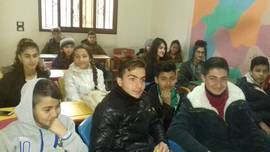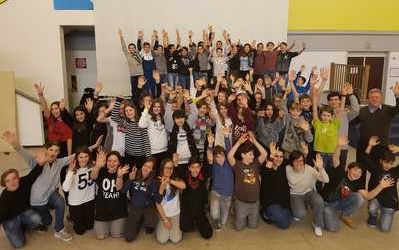Back to top: Middle schools
Introduction
Archaeology deals with a distant past. And yet, today archaeology offers us, in Syria as elsewhere, a promise for a young future.
A young future, because young people are at the center of those dynamics which let modern society look ahead.
A young future, because archaeology participates in it with a new vigor. It is archaeology as such that rediscovers its own youth.
Thanks to the initiative of our local collaborators in Syria, as well as our colleagues in Italy and Greece, starting from 2017 we have set in motion a series of unprecedented educational activities.
For middle school students, we have activated a unique correspondence, bringing together different groups of young people in different regions of the world.
In doing so, we want to contribute to broadening horizons. Intellectual horizons – the knowledge of a particular moment in the past, and the encouragement to appropriate the values of the past – but also more personal horizons – with the development of a greater sense of self-esteem, reinforced by the feeling of being fully recognized by “others” who belong to radically different social and geographical contexts.
Back to top: Middle schools
School year 2017/2018
|
Two schools, in two small towns in Syria and Italy. Two groups of kids of the same age, similar in their enthusiasm and spontaneity yet with different sensitivity and habits. The first ones, students of an English school in the city of Qamishli, smile at us, proud in their simple room – aware of being part of a unique project, that will allow them to broaden their horizons. |

|
|||||
| The second ones, students of a junior high school in Domodossola, constantly absorbed in a communication network in which it is not easy to orient oneself, are discovering what it means to have their same age and live in a country that is at war. |

|
|||||
|
These kids began to reflect. What is the past? Why should someone study it? What does "past" mean for us, which are the traditions that keeps us bound to previous generations? And why is it important to protect these tradition together with the territory where they originated? They are pondering, and writing. They are exchanging their thoughts, finding out together with their educators how different their sensitivities are. We have described the results of such an extraordinary exchange in the exhibition "The Millennia for Today", inaugurated in Rimini in August 2018, and in its catalogue which has been published in Italian, English, and Arabic. Some thoughts written by the children are also available at this page this page. ### School year 2019/2020 {#middle2019 TO="middle schools: 2019/2020"}
Back to top: Middle schools | ||||||
